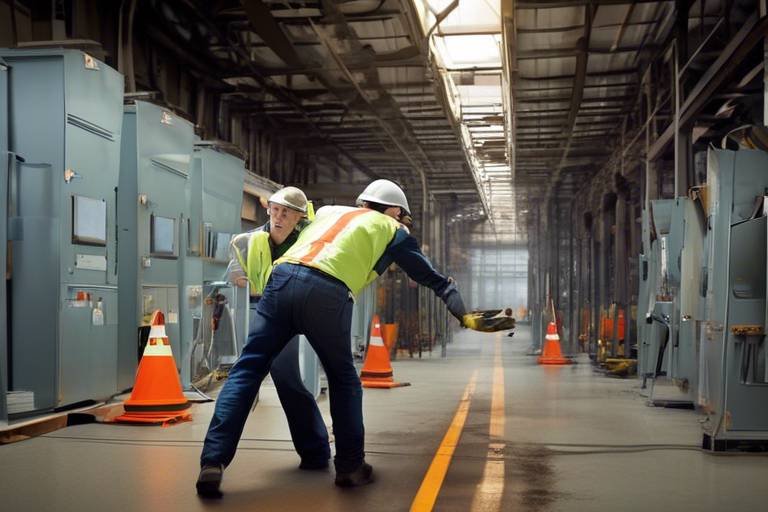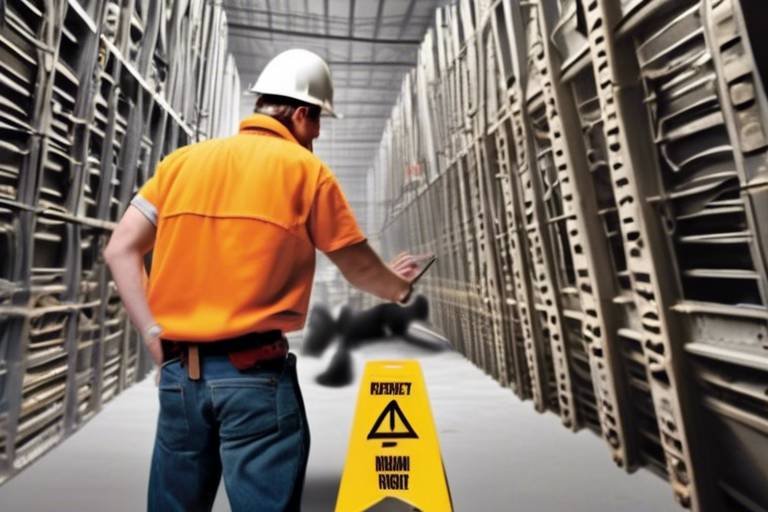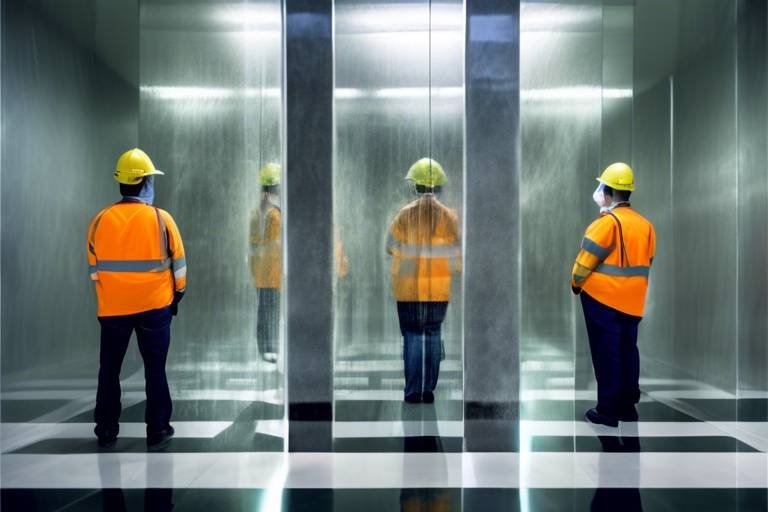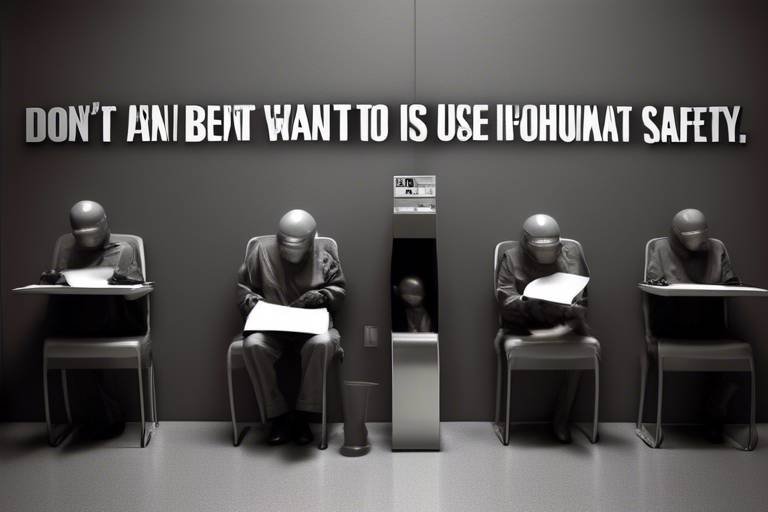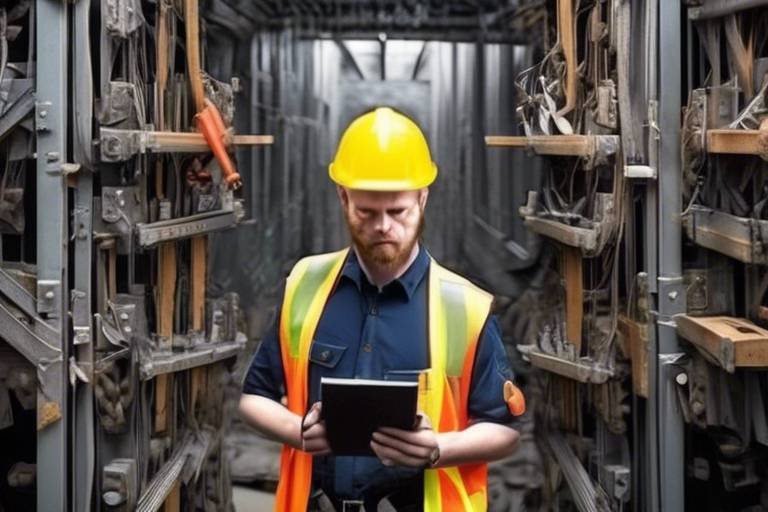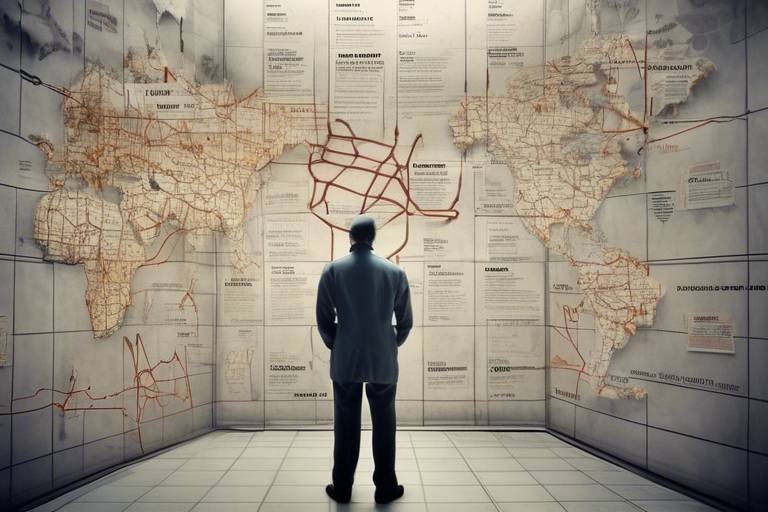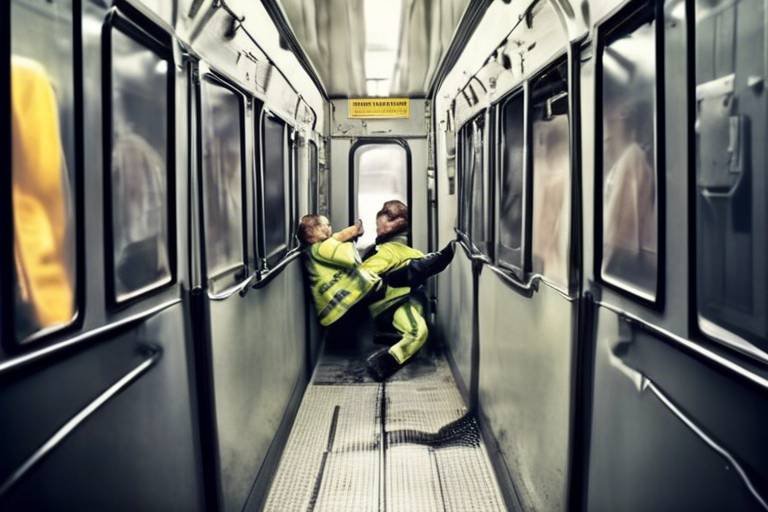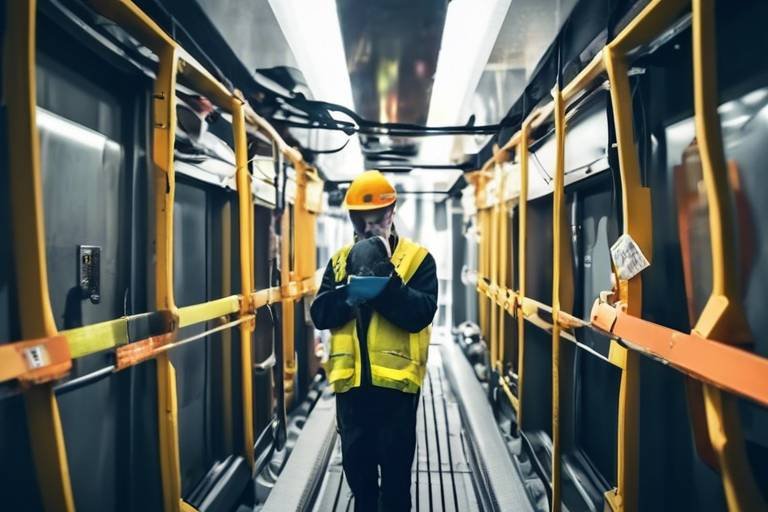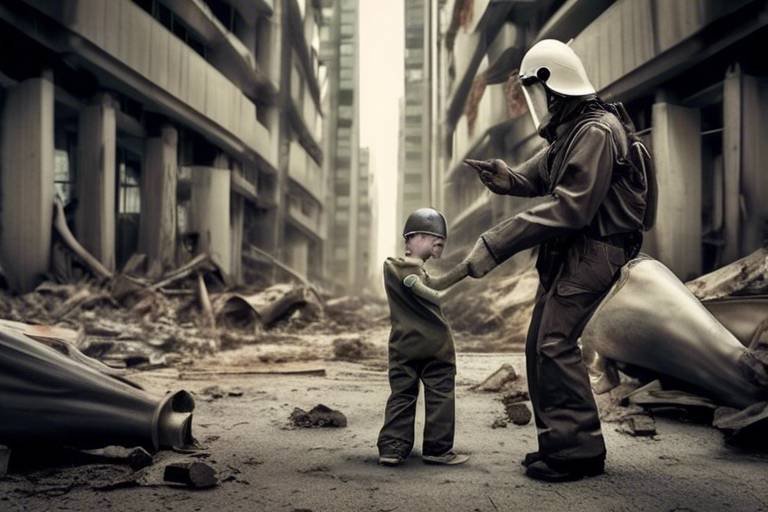Be Safe! Understanding the Importance of Human Behavior
In today's fast-paced world, the importance of safety cannot be overstated. But have you ever stopped to think about how human behavior plays a pivotal role in ensuring safety? From our daily routines to emergency situations, our actions and decisions can significantly influence outcomes. Understanding the psychology behind these behaviors is essential for fostering safer environments, both at home and in our communities. In this article, we will explore various aspects of human behavior that impact safety, delve into the psychology of risk perception, and discuss strategies that can help promote safer practices.
Risk perception is a fascinating concept that shapes how we respond to potential dangers. It’s not just about what we know; it’s also about how we feel. Our brains are wired to react to threats, but sometimes, cognitive biases can cloud our judgment. For instance, have you ever noticed how people tend to underestimate risks that are familiar to them? This is known as the familiarity bias. On the flip side, new or unusual risks often provoke exaggerated fears, leading to a phenomenon called the availability heuristic. This means that if something is easily recalled, we perceive it as more likely to happen. Understanding these biases can help us navigate our responses to danger more effectively.
When emergencies strike, human behavior can be unpredictable. Some individuals may freeze, while others jump into action. Understanding these behavioral responses is crucial for developing effective safety protocols. For instance, during a fire evacuation, the crowd's behavior can significantly impact the overall safety of everyone involved. Factors such as stress levels, group dynamics, and even personal experiences can shape how individuals react in crisis situations.
The fight or flight response is a natural reaction to perceived threats. When faced with danger, our body releases adrenaline, preparing us to either confront the threat or flee from it. This physiological response has been critical for human survival throughout history. However, in modern emergencies, this instinct can sometimes lead to panic rather than effective action. Understanding this response can help us create better training programs that prepare individuals for real-life situations.
Stress can be a double-edged sword. While a little stress can motivate us to perform better, too much stress can impair our judgment and lead to poor decision-making. During emergencies, high stress levels can cloud our ability to think clearly, potentially resulting in dangerous outcomes. To mitigate this impact, it’s essential to develop coping strategies that can help individuals stay calm and focused when it matters most.
When a crisis occurs, the behavior of individuals is often influenced by the group around them. This group dynamic can either enhance or hinder safety. For example, if a crowd remains calm, others are likely to follow suit, creating a sense of order. Conversely, if panic ensues, it can lead to chaos and increased risk. Understanding these dynamics is crucial for training and preparedness initiatives.
Effective training can enhance individuals' responses to emergencies. This isn’t just about knowing what to do; it’s about practicing those responses until they become second nature. Preparedness fosters a sense of confidence that can significantly reduce panic in real situations. Whether it’s through drills, workshops, or community engagement, being prepared can make a world of difference in how we react during emergencies.
To promote safer behaviors, we must first understand what motivates individuals and how social influences can shape actions. For instance, people are more likely to adopt safer practices if they see their peers doing the same. This social proof can be a powerful motivator. By creating environments where safety is prioritized and visible, we can encourage individuals to make better choices.
Education plays a vital role in shaping behavior. Awareness campaigns can effectively communicate safety information and foster responsible actions. Consider how a simple campaign about the importance of wearing seatbelts has saved countless lives. By making safety a part of the conversation, we can create a culture where individuals feel responsible for their own safety and the safety of others.
Engaging communities in safety initiatives can enhance collective responsibility. When individuals feel connected to their community, they are more likely to participate in safety programs and initiatives. This can lead to a ripple effect, where one person's commitment to safety inspires others to follow suit. Community involvement not only promotes safer behaviors but also fosters a sense of belonging and support.
- What is the fight or flight response? The fight or flight response is a physiological reaction to perceived threats, preparing the body to either confront or flee from danger.
- How does stress affect decision-making? High levels of stress can impair judgment and lead to poor decision-making during emergencies.
- Why is community engagement important for safety? Community engagement enhances collective responsibility and encourages individuals to adopt safer practices.

The Psychology of Risk Perception
This article explores how human behavior influences safety, the psychology behind decision-making, and strategies to promote safer environments. Understanding these elements is crucial for enhancing personal and community safety.
Risk perception is a fascinating and complex area of psychology that significantly affects how individuals respond to potential dangers. Have you ever wondered why some people fear flying while others feel perfectly safe? This divergence in perception can often be traced back to cognitive biases and societal influences that shape our understanding of risk and safety. Cognitive biases are mental shortcuts that can lead us to misjudge the likelihood of events occurring. For instance, the availability heuristic suggests that we are more likely to perceive risks based on how easily we can recall similar instances. If a plane crash is heavily publicized, it may lead us to overestimate the dangers of air travel, even though statistically, it remains one of the safest modes of transportation.
Moreover, societal influences also play a crucial role in shaping our risk perceptions. Cultural backgrounds, personal experiences, and even media portrayals can skew our understanding of what is truly dangerous. For example, in some cultures, certain natural disasters may be seen as a normal part of life, leading to a lower perception of risk. In contrast, in areas where such events are rare, the same disasters may be viewed with heightened fear and anxiety. This disparity can lead to a lack of preparedness in high-risk areas and an overreaction in low-risk areas, highlighting the importance of addressing these psychological factors in safety education and training.
To further illustrate this, consider the following table that summarizes various cognitive biases and their impact on risk perception:
| Cognitive Bias | Description | Impact on Risk Perception |
|---|---|---|
| Availability Heuristic | Relying on immediate examples that come to mind | Overestimating the likelihood of events based on recent news |
| Optimism Bias | Believing that one is less likely to experience a negative event | Underestimating personal risk in dangerous situations |
| Confirmation Bias | Favoring information that confirms existing beliefs | Ignoring evidence that contradicts personal safety perceptions |
Understanding these biases is vital in promoting safer behaviors. By recognizing how our minds can distort reality, we can take steps to mitigate these effects. For instance, engaging in open discussions about risks with friends, family, or community members can help counteract individual biases. Additionally, utilizing factual data and statistics can ground our perceptions in reality, leading to more informed decision-making.
In conclusion, the psychology of risk perception is a powerful force that shapes our behavior in the face of danger. By becoming aware of our cognitive biases and the societal influences at play, we can better navigate our responses to risks and create a safer environment for ourselves and our communities.
- What is risk perception? Risk perception refers to the subjective judgment that people make about the characteristics and severity of a risk.
- How do cognitive biases affect risk perception? Cognitive biases can lead individuals to misjudge risks based on personal experiences or emotional responses rather than factual data.
- Why is understanding risk perception important? Understanding risk perception is crucial for developing effective safety protocols and educating individuals on how to respond to potential dangers.

Behavioral Responses to Emergencies
When an emergency strikes, the way people respond can vary significantly, often influenced by a combination of psychological factors, past experiences, and environmental cues. Understanding these behavioral responses is crucial for developing effective safety protocols that can save lives. Have you ever wondered why some people freeze in the face of danger while others spring into action? This phenomenon can be attributed to several factors, including the inherent fight or flight response, social dynamics, and individual stress levels.
In crisis situations, individuals often exhibit predictable patterns of behavior. For instance, some may choose to evacuate immediately, while others might attempt to help those around them. These reactions can be influenced by their understanding of the threat and their perception of the available options. Factors such as previous training, personal experiences, and even the behavior of others can significantly sway decisions made during emergencies. It's fascinating to observe how the actions of one person can create a ripple effect, prompting others to either follow suit or hesitate.
To further illustrate these behavioral responses, let’s consider the various actions that people might take during an emergency:
- Evacuation: Many individuals instinctively seek to leave the area of danger, prioritizing personal safety above all else.
- Assistance: Some may feel compelled to help others, often putting themselves at risk in the process.
- Denial: A common reaction is to underestimate the severity of the situation, leading to delayed responses.
- Compliance: In some cases, people may follow directives from authorities, trusting in their guidance.
Each of these responses can be shaped by the environment, societal norms, and even the media portrayal of crises. For example, during natural disasters, individuals who have experienced similar events may react differently than those encountering such situations for the first time. Their past experiences can either empower them to act decisively or lead to a sense of paralysis, depending on their psychological readiness.
Moreover, the presence of others can significantly influence individual behavior. In a crowded situation, individuals may look to the actions of their peers to gauge how to respond. This phenomenon, known as social proof, can either enhance safety—if others are acting rationally—or exacerbate chaos, as seen in panic situations where herd mentality takes over.
Ultimately, understanding these behavioral responses is essential for crafting effective training programs and safety protocols. By anticipating how people are likely to react in emergencies, organizations can better prepare themselves and their communities for such events, ensuring that everyone knows how to respond in a way that maximizes safety and minimizes panic.
Q: What is the most common response people have during emergencies?
A: The most common responses include evacuation, assistance to others, denial of the situation, and compliance with authority. Each person's reaction can vary based on their experiences and the specific context of the emergency.
Q: How can understanding behavioral responses improve safety protocols?
A: By understanding how individuals typically respond in emergencies, organizations can create more effective training programs and resources that guide people in making safer choices during crises.
Q: Does group behavior influence individual actions during emergencies?
A: Yes, group dynamics play a significant role in how individuals react. People often look to the behavior of those around them, which can either promote safety or lead to panic.
Q: Can past experiences affect how someone reacts in an emergency?
A: Absolutely! Past experiences can shape an individual's response, either empowering them to act decisively or causing them to freeze in fear, depending on how they processed those experiences.

Fight or Flight Response
The is a fascinating and primal reaction that takes place when we perceive a threat. It’s like flipping a switch in our brains, activating a cascade of physiological changes designed to prepare us for immediate action. Imagine you're walking in the woods and suddenly spot a bear. Your heart races, your palms sweat, and your body is flooded with adrenaline. This is your body gearing up to either confront the bear (fight) or run away as fast as you can (flight). But what’s happening behind the scenes?
At its core, the fight or flight response is all about survival. When faced with danger, the brain's amygdala detects the threat and sends signals to the hypothalamus, which in turn activates the sympathetic nervous system. This leads to a release of hormones like adrenaline and cortisol. These hormones prepare the body for action by:
- Increasing heart rate to pump more blood to muscles
- Enhancing respiratory rate to provide more oxygen
- Dilating pupils for improved vision
- Redirecting blood flow away from non-essential functions
These physiological changes are crucial because they enable us to react quickly. However, while this response is incredibly useful in life-threatening situations, it can also lead to challenges in everyday life. For instance, if you experience a false alarm—like mistaking a shadow for a threat—your body still goes through the same intense reaction. This can lead to chronic stress if such responses occur frequently without real danger.
Moreover, the fight or flight response is not just a solo act; it can significantly influence group dynamics during emergencies. When individuals are in a group, their responses can shift based on the behavior of those around them. If one person panics, it can trigger a chain reaction, leading others to follow suit. This phenomenon is often referred to as social contagion, where emotions and behaviors spread through a group like wildfire. Understanding these dynamics is crucial for developing effective safety protocols and training that prepares individuals to act calmly and decisively in emergencies.
In summary, the fight or flight response is a remarkable example of how our bodies are wired for survival. While it serves a vital role in protecting us from danger, it also highlights the complexities of human behavior in crisis situations. By recognizing these responses, we can better prepare ourselves and others for emergencies, ultimately fostering a safer environment for everyone.
Q: What triggers the fight or flight response?
A: The fight or flight response is triggered by perceived threats or danger, activating the amygdala in the brain, which then sends signals to the body to prepare for action.
Q: Can the fight or flight response be controlled?
A: While the response is instinctual, individuals can learn techniques such as deep breathing and mindfulness to help manage their reactions in stressful situations.
Q: How does this response affect decision-making?
A: The fight or flight response can impair judgment, as the body's focus shifts to survival rather than rational thinking. This can lead to impulsive decisions during emergencies.
Q: Are there long-term effects of frequent fight or flight responses?
A: Yes, chronic activation of this response can lead to health issues such as anxiety, depression, and cardiovascular problems due to prolonged stress on the body.

Impact of Stress on Decision-Making
When the pressure is on, stress can be a double-edged sword. On one hand, it can motivate us to act quickly, but on the other, it can cloud our judgment and lead to poor decision-making. Imagine you’re in a high-stakes situation, like a fire alarm going off in a crowded theater. The adrenaline kicks in, and while it might propel you to move swiftly, it can also create a fog of confusion that hampers your ability to think clearly. Stress affects our cognitive functions, and understanding this impact is crucial for improving our responses in emergencies.
Research shows that stress triggers the body's fight-or-flight response, releasing hormones such as adrenaline and cortisol. These hormones prepare us to react, but they can also narrow our focus. In a crisis, this means we might miss critical information or overlook safer options. For instance, someone might instinctively run towards an exit without assessing whether it's the safest route. This instinctual behavior, while natural, can lead to panic and chaos, especially in group settings.
Moreover, the effects of stress on decision-making can be exacerbated by the presence of others. In a group, individuals may conform to the behaviors of those around them, even if those actions are not the best choices. This phenomenon, known as social conformity, can lead to a collective anxiety that amplifies poor decisions. Think about it: if everyone around you is panicking, you might be more likely to panic too, rather than taking a moment to evaluate your options.
To illustrate the impact of stress on decision-making, consider the following table that summarizes key effects:
| Effect of Stress | Description |
|---|---|
| Cognitive Overload | Stress can overwhelm our mental capacity, leading to rushed and ill-considered decisions. |
| Narrowed Focus | Under stress, we may focus only on immediate threats, ignoring other important information. |
| Impaired Judgment | High stress levels can distort our perception of risk, leading to poor choices. |
| Group Dynamics | Stress can influence group behavior, causing individuals to follow the crowd rather than make independent decisions. |
To mitigate the adverse effects of stress on decision-making, it’s essential to implement strategies that promote calmness and clarity. Training programs that simulate emergency scenarios can help individuals practice making decisions under pressure while reinforcing the importance of assessing situations critically. Techniques such as deep breathing, mindfulness, and situational awareness can also be beneficial. By fostering a sense of preparedness, we can reduce the panic response and enhance our ability to make sound decisions in crises.
In summary, understanding the impact of stress on decision-making is crucial for improving our responses to emergencies. By recognizing how stress affects our judgment, we can develop strategies to counteract its negative effects, ultimately leading to safer outcomes for ourselves and those around us.
Q: How does stress affect decision-making in emergencies?
A: Stress can impair judgment, narrow focus, and lead to cognitive overload, resulting in rushed and potentially poor decisions during emergencies.
Q: What can individuals do to improve decision-making under stress?
A: Practicing emergency scenarios, using deep breathing techniques, and maintaining situational awareness can help improve decision-making during stressful situations.
Q: Why is group behavior important in crisis situations?
A: Group dynamics can significantly influence individual actions, often leading to conformity and panic, which can complicate decision-making and overall safety.

Group Dynamics in Crises
When crises strike, the way individuals behave often shifts dramatically, influenced by the dynamics of the group around them. Understanding these group dynamics is crucial for enhancing safety and ensuring effective responses during emergencies. Have you ever noticed how people tend to look to others for cues on how to react? This phenomenon, known as social proof, can lead to both positive and negative outcomes in high-stress situations. For instance, if one person starts to panic, it can trigger a chain reaction, causing others to panic as well. Conversely, if a leader remains calm, it can help stabilize the group.
One of the most fascinating aspects of group behavior during crises is the concept of collective efficacy. This refers to a group's shared belief in its ability to perform actions required to achieve specific goals. In a crisis, when individuals feel empowered as part of a cohesive unit, they are more likely to take decisive actions that promote safety. For example, during a fire evacuation, a group that works together to guide each other to safety can significantly reduce chaos and confusion.
Moreover, the roles that individuals assume within the group can greatly influence outcomes. Some may take on leadership roles, while others might become followers. Understanding these roles can help in developing strategies for effective crisis management. In fact, research shows that groups tend to exhibit certain behaviors during crises:
| Behavior | Description |
|---|---|
| Leadership Emergence | Individuals naturally gravitate toward those who display confidence and decisiveness. |
| Conformity | People often align their behaviors with the majority, which can lead to herd mentality. |
| Diffusion of Responsibility | In groups, individuals may feel less personal responsibility, assuming others will act. |
It’s also essential to recognize the impact of communication within groups during crises. Clear, concise communication can help mitigate confusion and ensure that everyone is on the same page. For instance, emergency drills that simulate real-life scenarios can prepare groups to respond effectively when an actual crisis occurs. These drills not only build familiarity with the procedures but also enhance the group's overall cohesion and trust in one another.
In summary, group dynamics play a pivotal role during crises, influencing how individuals react and make decisions. By fostering an environment of collective efficacy, encouraging effective communication, and understanding the roles individuals play, we can enhance our preparedness for emergencies. After all, when the chips are down, it’s often the strength of the group that determines our safety and success.
- What are group dynamics? Group dynamics refer to the behavioral and psychological processes that occur within a social group, particularly during crises.
- How can understanding group dynamics improve safety? By recognizing how individuals behave in groups, we can develop strategies to enhance communication and leadership during emergencies.
- What role does communication play in crises? Effective communication is essential for ensuring that all group members understand their roles and responsibilities, which helps to reduce confusion and panic.

Training and Preparedness
When it comes to safety, the old adage "better safe than sorry" couldn't be more relevant. are two pillars that can significantly enhance our ability to respond effectively in emergencies. Think of it like practicing for a big game; if you don't train, how can you expect to perform well when it counts? Just as athletes prepare for competition, individuals and communities must also equip themselves with the skills and knowledge necessary to handle crises.
Effective training programs are not just about memorizing procedures; they are about creating muscle memory and fostering a mindset geared toward safety. This involves simulations, drills, and real-life scenarios that help individuals grasp the gravity of various situations. For instance, consider a fire drill in a school—students learn not just to exit the building but also to remain calm and follow instructions. This practice ensures that when an actual emergency arises, their reactions are instinctive and informed.
Moreover, preparedness isn't solely an individual responsibility; it’s a community effort. When communities come together to prepare for potential emergencies, they create a network of support and knowledge. This collective approach can take many forms, including:
- Community workshops focused on first aid and emergency response.
- Regular safety drills organized by local authorities.
- Creation of neighborhood watch programs that foster vigilance and communication.
Another crucial aspect of training is understanding the specific risks associated with various environments. For example, a coastal community might prioritize training for hurricane preparedness, while a city prone to earthquakes would focus on different safety protocols. Tailoring training to the unique needs of a community ensures that individuals are well-equipped to handle the specific challenges they might face.
Furthermore, the role of technology in training cannot be overlooked. Virtual reality (VR) simulations, for instance, can immerse individuals in realistic emergency scenarios without the associated risks. This innovative approach not only enhances learning but also boosts confidence in responding to real-life situations. Imagine being able to practice evacuating a building during a fire in a safe, controlled environment—this is the future of training!
Ultimately, the goal of training and preparedness is to instill a sense of confidence and competence in individuals. When people know what to do in an emergency, they are less likely to panic, and more likely to help others. This sense of community resilience can be the difference between chaos and order during a crisis.
In conclusion, investing time and resources into training and preparedness is not just beneficial; it’s essential. By fostering a culture of safety through education and practice, we can ensure that individuals and communities are ready to face emergencies head-on, transforming fear into action.
Q1: Why is training important for emergency preparedness?
A1: Training equips individuals with the skills and knowledge necessary to respond effectively in emergencies, reducing panic and improving outcomes.
Q2: How can communities promote safety training?
A2: Communities can organize workshops, drills, and safety campaigns to educate residents about emergency response and preparedness.
Q3: What role does technology play in training?
A3: Technology, such as virtual reality, can enhance training by providing realistic simulations that prepare individuals for real-life emergencies.
Q4: How can I get involved in community safety initiatives?
A4: Look for local organizations that focus on safety training, volunteer for community drills, or participate in neighborhood watch programs.
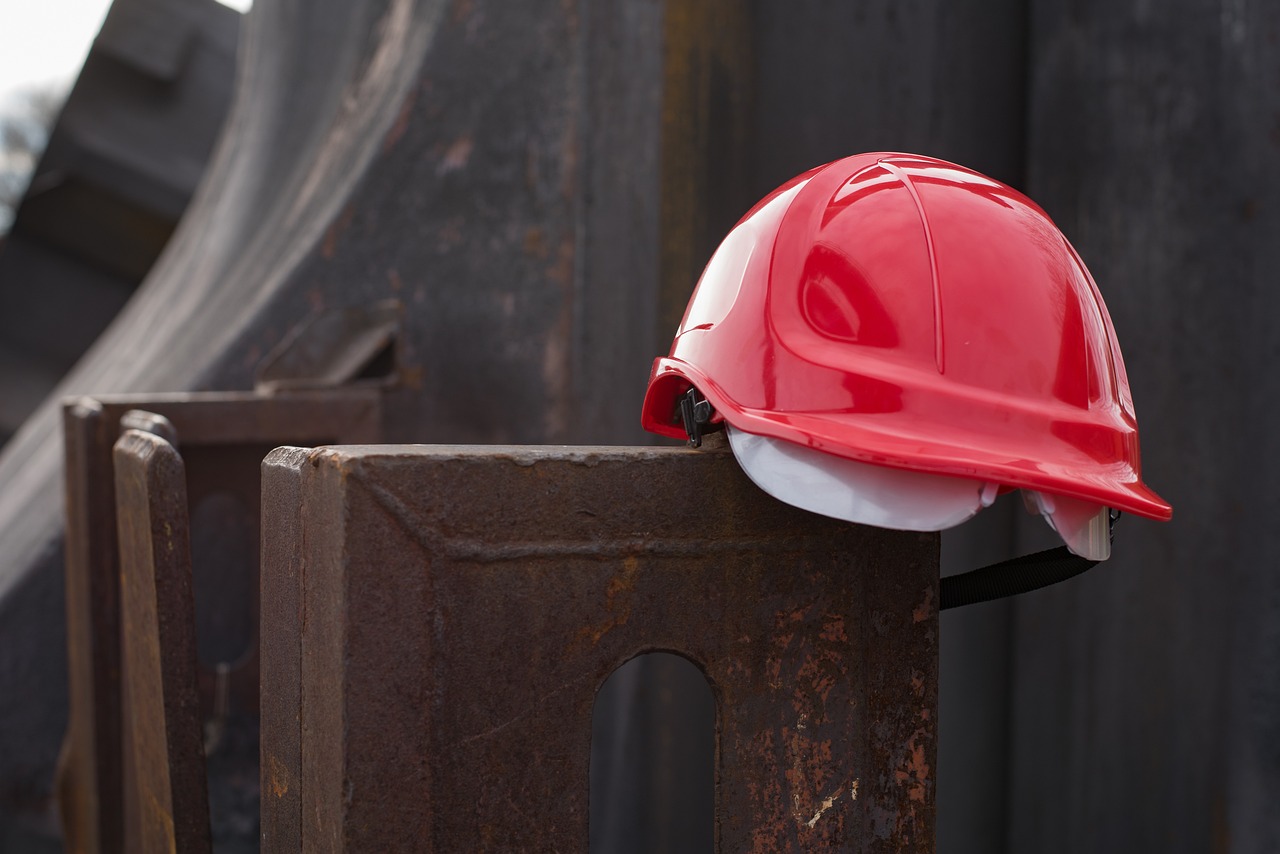
Influencing Safer Behavior
When it comes to safety, understanding how to influence behavior is key. Why do some people ignore safety protocols while others follow them religiously? The answer often lies in the psychology of motivation and the power of social influence. By grasping these concepts, we can promote safer practices within our communities and beyond. It's like planting seeds in a garden; with the right conditions, they can grow into something beautiful and beneficial.
One effective way to encourage safer behavior is through education and awareness. Imagine a world where everyone is informed about the risks and the best practices to mitigate them. Awareness campaigns can be likened to a lighthouse guiding ships away from rocky shores. They illuminate the path to safety, helping individuals understand the importance of adhering to safety measures. For instance, a community that regularly holds workshops on fire safety can significantly reduce the number of accidents. When people are educated, they are more likely to make informed decisions that enhance their safety and that of others.
Another crucial aspect is community engagement. When communities come together, they create a strong network of support and shared responsibility. This collective approach can lead to more effective safety measures. For example, neighborhood watch programs not only deter crime but also foster a sense of belonging and vigilance among residents. When people feel connected, they are more likely to look out for one another, creating a safer environment for all. Think of it as a safety net—when one person falls, the others are there to catch them.
Moreover, the role of social influence cannot be overstated. People are often swayed by the actions and attitudes of those around them. If a person sees their friends wearing helmets while biking, they are more likely to adopt that behavior too. This is where peer pressure can work in a positive way. By promoting safety as a community norm, we can create a ripple effect that encourages everyone to follow suit. It’s like a chain reaction; one safe action can inspire another, leading to a culture of safety.
In addition, incentives can also be a powerful motivator. Offering rewards for safe behavior can encourage individuals to take safety seriously. For instance, companies that implement safety programs with incentives for employees who report unsafe conditions or follow safety protocols often see a marked improvement in compliance. It’s a win-win situation; employees feel valued, and the workplace becomes safer.
Finally, let’s not forget the importance of feedback. Providing constructive feedback on safety practices can help individuals recognize areas for improvement. It’s essential to create an environment where people feel comfortable discussing safety without fear of judgment. Regular safety drills, for example, can serve as a platform for discussion and improvement, allowing individuals to learn from each other’s experiences and mistakes.
In summary, influencing safer behavior is a multifaceted approach that requires education, community engagement, social influence, incentives, and feedback. By fostering a culture of safety, we not only protect ourselves but also contribute to the well-being of our communities. Remember, safety is not just an individual responsibility; it’s a collective effort that can lead to a brighter, safer future for everyone.
- What are some effective strategies for promoting safety in the community?
Engaging community members through workshops, awareness campaigns, and neighborhood safety programs can be very effective. - How does social influence affect safety behavior?
People are more likely to adopt safe behaviors if they see their peers doing the same, creating a positive feedback loop. - Why is education important in promoting safety?
Education helps individuals understand risks and the importance of safety measures, empowering them to make informed decisions. - What role do incentives play in encouraging safe behavior?
Incentives can motivate individuals to adhere to safety protocols by rewarding them for their compliance.

Role of Education and Awareness
When it comes to safety, education and awareness are not just important; they are absolutely essential. Imagine a world where everyone understands the risks around them and knows how to respond effectively in emergencies. Sounds ideal, right? This is where the power of education comes into play. By equipping individuals with the right knowledge, we can significantly enhance their ability to make informed decisions that prioritize safety.
Education about safety should start early, ideally in schools, where children can learn about personal safety, emergency protocols, and the importance of being aware of their surroundings. Awareness campaigns can further reinforce these lessons, spreading vital information through various media channels. For instance, community workshops and online resources can serve as platforms to educate people on topics such as fire safety, first aid, and disaster preparedness.
Moreover, the effectiveness of these educational initiatives can be amplified by incorporating real-life scenarios into training sessions. Think about it: when people engage in hands-on practice, they are more likely to remember what they’ve learned. For example, conducting mock drills for fire evacuations or earthquake preparedness can foster a sense of readiness and calm during actual emergencies. These drills not only teach individuals how to react but also instill a sense of collective responsibility.
Another crucial aspect is the role of technology in education. With the rise of digital platforms, safety education can reach a broader audience. Online courses, interactive apps, and social media campaigns can disseminate information quickly and efficiently. Imagine receiving a notification on your phone about how to stay safe during a natural disaster or a video tutorial on performing CPR. This kind of immediate access to information can be lifesaving.
Furthermore, community involvement is vital in promoting safety education. When local organizations collaborate with schools and government agencies, they can create tailored programs that address specific community needs. For instance, if a neighborhood is prone to flooding, workshops can focus on flood preparedness and response strategies. This localized approach ensures that the information is relevant and actionable.
In conclusion, the role of education and awareness in promoting safer behavior cannot be overstated. By fostering a culture of safety through comprehensive educational initiatives, we can empower individuals and communities to take proactive steps in protecting themselves and others. Remember, knowledge is power, and in the realm of safety, it can make all the difference.
- Why is safety education important? Safety education equips individuals with the knowledge and skills needed to respond effectively in emergencies, ultimately reducing risks and enhancing community safety.
- How can communities promote safety awareness? Communities can promote safety awareness through workshops, campaigns, and collaboration with local organizations to address specific safety concerns.
- What role does technology play in safety education? Technology enables the dissemination of safety information through online courses, apps, and social media, making it more accessible and engaging for a wider audience.

Community Engagement and Safety
When it comes to enhancing safety within our neighborhoods, the old adage "it takes a village" couldn't be more accurate. Community engagement is not just a buzzword; it's a powerful tool that fosters collective responsibility and proactive behaviors among residents. Imagine a neighborhood where everyone looks out for one another, sharing information and resources to create a safer environment. This is the essence of community engagement. Not only does it empower individuals, but it also creates a network of support that can be crucial during emergencies.
One of the key benefits of community engagement is the **increased awareness** of safety issues. When community members come together, they can discuss and identify potential hazards in their area. This could be anything from poorly lit streets to the presence of suspicious activity. By holding regular meetings or organizing neighborhood watch programs, residents can stay informed and vigilant. For example, a community might decide to conduct a safety audit, assessing local parks, schools, and public spaces for safety risks. This collaborative approach not only improves safety but also strengthens community bonds.
Moreover, community engagement allows for the sharing of **resources and knowledge**. Local experts, such as law enforcement officers or emergency response teams, can provide valuable insights during workshops or community events. These gatherings serve as platforms for residents to learn about emergency preparedness, first aid, and disaster response strategies. By equipping individuals with the right information, communities can significantly enhance their resilience in the face of crises. For instance, a community might organize a "Safety Day" where residents participate in drills, learn about fire safety, or even practice evacuation procedures. Such activities not only educate but also build confidence among participants.
Another important aspect of community engagement is the ability to foster **trust and communication**. When people feel connected to their neighbors, they are more likely to report suspicious activities or collaborate on safety initiatives. This open line of communication can be facilitated through social media groups or community apps, where residents can quickly share alerts or safety tips. Imagine a situation where a resident notices unusual behavior in their vicinity; with a robust community network, they can promptly alert others and take appropriate action. This kind of vigilance can deter crime and create a safer atmosphere for everyone.
To illustrate the impact of community engagement on safety, consider the following table that outlines various community initiatives and their outcomes:
| Initiative | Description | Outcome |
|---|---|---|
| Neighborhood Watch | A program where residents monitor each other's homes and report suspicious activities. | Reduction in local crime rates and increased community vigilance. |
| Safety Workshops | Educational sessions on emergency preparedness and first aid. | Higher levels of preparedness among residents, leading to quicker responses during emergencies. |
| Community Clean-Up Days | Events where residents come together to clean and beautify public spaces. | Improved neighborhood pride and reduced crime rates due to increased foot traffic. |
In conclusion, community engagement is a vital component of safety. By fostering a sense of belonging and collective responsibility, communities can create environments where safety is a shared priority. Engaging in open dialogues, sharing resources, and collaborating on initiatives not only enhances safety but also strengthens the fabric of the community. As we move forward, let’s remember that each one of us plays a crucial role in building a safer world, starting from our own neighborhoods.
Q: How can I get involved in my community's safety initiatives?
A: You can start by attending community meetings, joining local safety programs, or volunteering for neighborhood watch initiatives. Reach out to your local community center or law enforcement for more information on how to participate.
Q: What are some effective ways to promote safety awareness in my community?
A: Organizing workshops, creating informative flyers, and utilizing social media platforms to share safety tips can be effective. Additionally, consider partnering with local organizations to host events focused on safety education.
Q: How can community engagement impact crime rates?
A: Engaged communities tend to have lower crime rates because residents are more vigilant and proactive in reporting suspicious activities. When people know their neighbors and communicate regularly, it fosters a sense of security and accountability.
Frequently Asked Questions
- What is the importance of understanding human behavior in safety?
Understanding human behavior is crucial because it directly influences how individuals react to potential dangers. By grasping the psychology behind decision-making, we can develop better safety protocols and strategies that cater to real human responses during emergencies.
- How does risk perception affect our safety decisions?
Risk perception shapes how we view potential threats and influences our responses. Cognitive biases, societal norms, and personal experiences can skew our understanding of risk, leading to either overreaction or underestimation of dangers. Recognizing these biases helps us make more informed decisions.
- What are common behavioral responses during emergencies?
During emergencies, people often exhibit a range of behaviors, from panic to calmness. Factors such as stress levels, prior training, and group dynamics can significantly influence these responses. Understanding these patterns can help improve emergency protocols and training.
- What is the fight or flight response?
The fight or flight response is a physiological reaction that occurs when we perceive a threat. It prepares our body to either confront the danger or escape from it. This instinctual reaction can be crucial in emergencies, but it can also lead to impulsive decisions if not managed properly.
- How does stress impact decision-making in crises?
Stress can cloud judgment and lead to poor decision-making during emergencies. It can cause individuals to freeze, panic, or act irrationally. Recognizing the effects of stress and finding ways to mitigate it—such as through training and preparedness—can improve outcomes in crisis situations.
- What role does group dynamics play in emergencies?
Group dynamics can greatly influence individual actions during crises. People often look to others for cues on how to react, which can either enhance safety or exacerbate chaos. Understanding these dynamics helps in crafting better emergency response strategies.
- Why is training and preparedness important for safety?
Training and preparedness equip individuals with the knowledge and skills needed to respond effectively in emergencies. It fosters confidence and reduces panic, leading to more rational decision-making and better overall safety outcomes.
- How can communities promote safer behaviors?
Communities can promote safer behaviors by engaging in safety initiatives, raising awareness, and encouraging collective responsibility. Community involvement creates a culture of safety where individuals feel empowered to act responsibly and support one another in times of crisis.
- What role does education play in safety awareness?
Education is vital in shaping safety behaviors. Awareness campaigns can effectively communicate important safety information, helping individuals understand risks and adopt responsible actions. The more informed people are, the better prepared they will be to handle emergencies.



